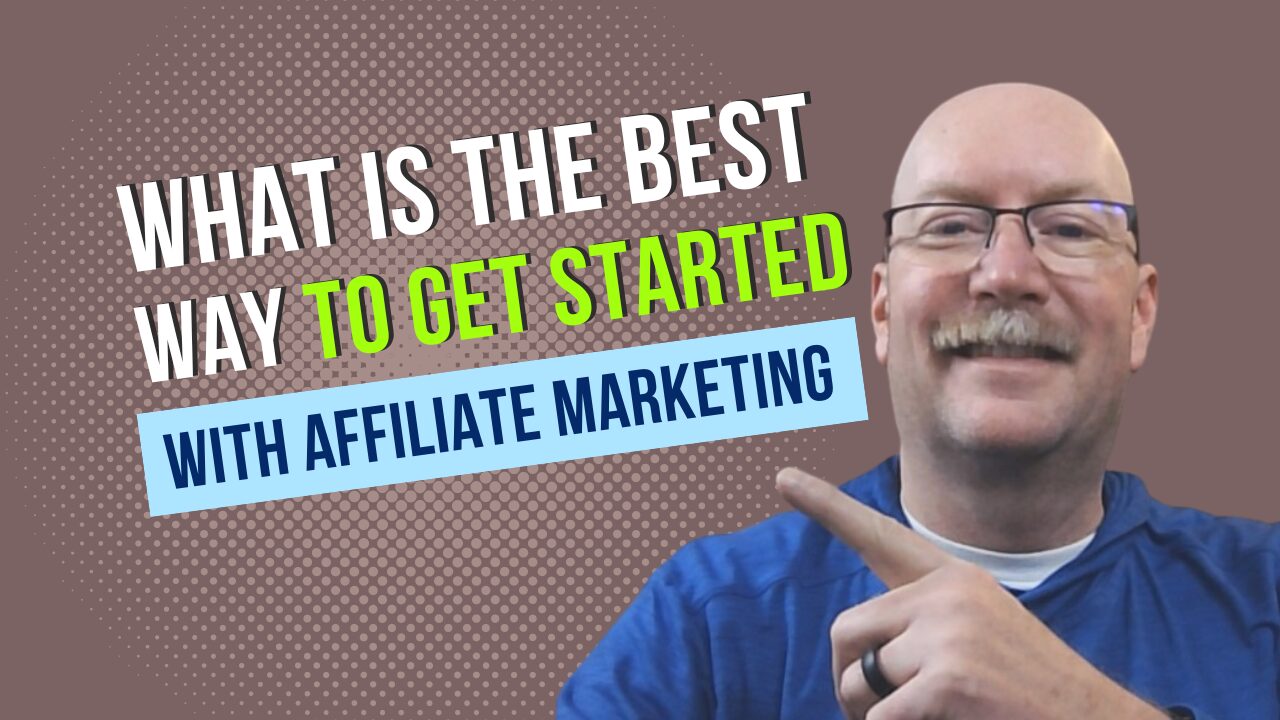I’m going to walk you through the ins and outs of getting started with affiliate marketing. This isn’t just about making money online; it’s also about creating a brand and a presence that you’re proud of.
Table of Contents
- Leveraging Content: The Power of Blogging
- Expanding Your Reach with Video Content on YouTube
- Maximizing Profits: High-Commission Programs and Beyond
- Frequently Asked Questions
At its core, affiliate marketing is about earning a commission by promoting other people’s or company’s products. You choose a product you like, promote it to others, and earn a piece of the profit for each sale that you make.
Don’t worry too much about the technical aspects right away. Instead, your first step is identifying your niche. Choose something that resonates with you, something you’re passionate about and where you can showcase your expertise. This focus will be the cornerstone of your affiliate marketing journey.
Now, how do you build an online presence? You’re going to start with a blog. That’s going to include picking a topic that you love and are knowledgeable about. You can always adjust your approach down the road, but a focused start is key.
You can start for free with this blogging platform WordPress. This platform offers user-friendly interfaces for those who are new to the blogging scene and want to hit the ground running without upfront costs.

In my opinion, the advantages of starting with a blog are numerous. It helps you establish authority and provides a platform for rich content that’s perfect for incorporating affiliate links. Plus, search engines love valuable content, and over time, this can lead to organic traffic for your affiliate offers.
Leveraging Content: The Power of Blogging
Now that you’ve dipped your toes into affiliate marketing and set up your blog, let’s talk about how to harness the power of blogging to boost your affiliate marketing efforts. Blogging is not just about putting words on a webpage; it’s about creating content that resonates with your audience and encourages engagement with your affiliate links.

To get started, focus on crafting compelling, useful content that genuinely helps your readers. Whether you’re reviewing products, sharing tips, or telling a story, your blog posts should integrate affiliate links naturally. This means choosing products that align with your content and addressing your audience’s interests and needs without making your blog feel like a sales pitch.
Building an audience is key to successful affiliate marketing. Utilize social media, networking with other bloggers, and employing SEO best practices to get your blog seen. Remember, more traffic often equates to more opportunities for click-throughs on those affiliate links.
And yes, don’t overlook the importance of analytics. Tools like Google Analytics will help you understand which posts are performing well, where your traffic is coming from, and how visitors interact with your content. Use this data to refine your strategy, focus on what works, and potentially increase your earnings.
As your blog grows, so will your brand. This is where you can start to truly solidify your reputation as a trusted expert in your niche. Maintain a consistent tone, be transparent about your affiliate partnerships, and continue providing value. This long-term approach is what can turn a blog into a reliable source of affiliate income.
Expanding Your Reach with Video Content on YouTube
So why is YouTube such a pivotal platform for affiliate marketers? Let’s break it down. YouTube has over two billion logged-in monthly users, offering a massive audience pool for you to dive into. Videos also have the unique advantage of showing products in action, helping you to establish trust and authority in your niche.
Setting up a YouTube channel to complement your blog is a strategic move. It means you can repurpose blog content into video, potentially expanding your affiliate revenue streams. It’s really about leveraging your existing content and presenting it in a way that’s more digestible for some users.
You’re going to want to decide between short-form and long-form video content. Short-form is excellent for quick tips or insights, while long-form can deeply explore topics, and provide tutorials, or product reviews. Both forms should aim to add value, position affiliate products naturally, and inspire viewers to click through your affiliate links.
Engagement is key on YouTube. It’s not just about pushing products; it’s about connecting with your audience, answering their questions, and providing them with valuable information. Encourage them to interact with your content by liking, commenting, and subscribing, which helps signal to YouTube that your content is worth promoting.
Then there’s video optimization. This involves using relevant keywords in your video titles, descriptions, and tags. It also includes creating engaging thumbnails and using calls to action within your videos. Optimization makes your content more discoverable, which is crucial for gaining traffic to your affiliate links.
Maximizing Profits: High-Commission Programs and Beyond
Now, I’m going to show you the real sweet spot of affiliate marketing – programs with hefty commissions. Imagine earning 50% or more for every sale you drive! This isn’t a myth; there are programs out there willing to split profits with you generously.
Let’s talk numbers for a second. Higher commission rates mean you don’t need a flood of traffic to see substantial income. Fewer conversions are necessary, and your earning potential skyrockets, especially if you’re marketing premium products.
And here’s the kicker: with affiliate marketing, you can forget about the hassles of creating a product, managing inventory, or dealing with customer service issues. That’s right, you can bid farewell to shipping woes and customer complaints. Your focus is on marketing and growing your income.
Choosing the most lucrative programs requires a bit of legwork, sure. You want offers that resonate with your blog’s content and your audience’s interests. It’s about aligning value with your readers’ expectations and ensuring the products are worth advocating.

So where does all this lead us? Affiliate marketing presents an incredible opportunity to build a revenue stream with limited overhead. It’s about leveraging the right strategies, from blogging to video content, and tapping into high-commission affiliate programs.
To wrap things up, remember this: affiliate marketing is a marathon, not a sprint. Your first attempt doesn’t need to be your last. You can always adjust your approach down the road, honing your strategies for better results. If you stay diligent, learn from your experiences, and adapt, the potential for a lucrative and rewarding affiliate marketing business is monumental.
Frequently Asked Questions
- What is affiliate marketing, and how does it work?
- Affiliate marketing involves earning a commission by promoting other people’s or company’s products. It outlines the process of choosing a product, promoting it to others, and earning a commission for each sale made.
2. How do I get started with affiliate marketing, especially if I’m new to the concept?
- Identifying a niche that resonates with the individual’s passion and expertise. It suggests starting with a blog using the WordPress platform and highlights the advantages of blogging for establishing authority and incorporating affiliate links.
3. How can I effectively leverage blogging to boost my affiliate marketing efforts?
- by focusing on creating compelling, useful content that integrates affiliate links naturally. Building an audience through social media, networking, and SEO practices and emphasizes the importance of analytics for refining strategies and increasing earnings.
4. Why is YouTube considered a pivotal platform for affiliate marketers, and how can it complement a blog?
- YouTube’s massive audience and the unique advantage of showcasing products through videos. Use a YouTube channel to complement a blog, repurposing content, and offering tips on short-form and long-form video content creation.
5. How can I maximize profits in affiliate marketing, especially with high-commission programs?
- Share affiliate marketing by discussing programs with hefty commissions, highlighting the potential for substantial income with fewer conversions. Create content that shows the benefits of affiliate marketing, such as avoiding product creation hassles and customer service issues, and advises aligning high-commission programs with the blog’s content and audience’s interests.

